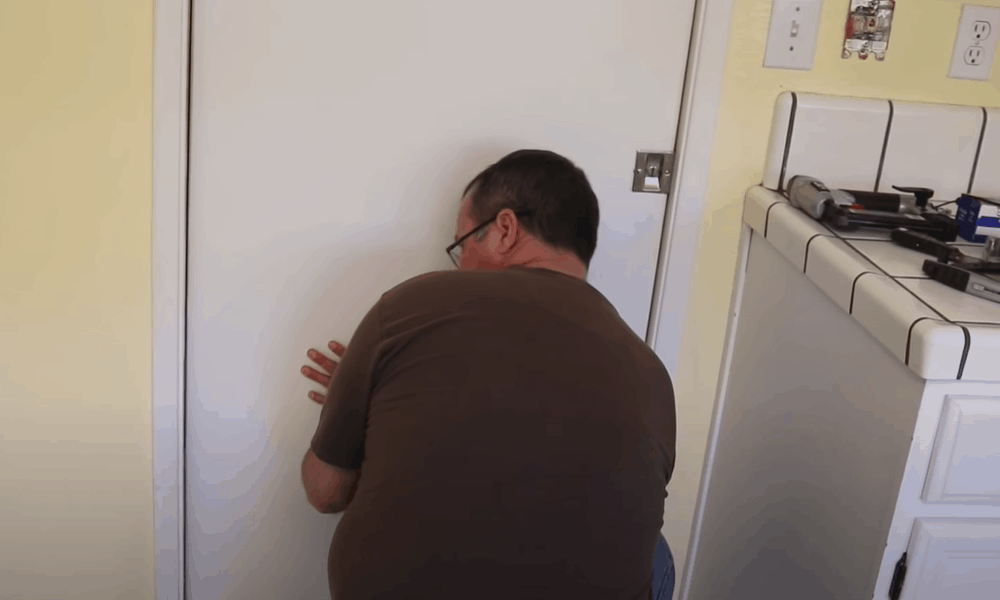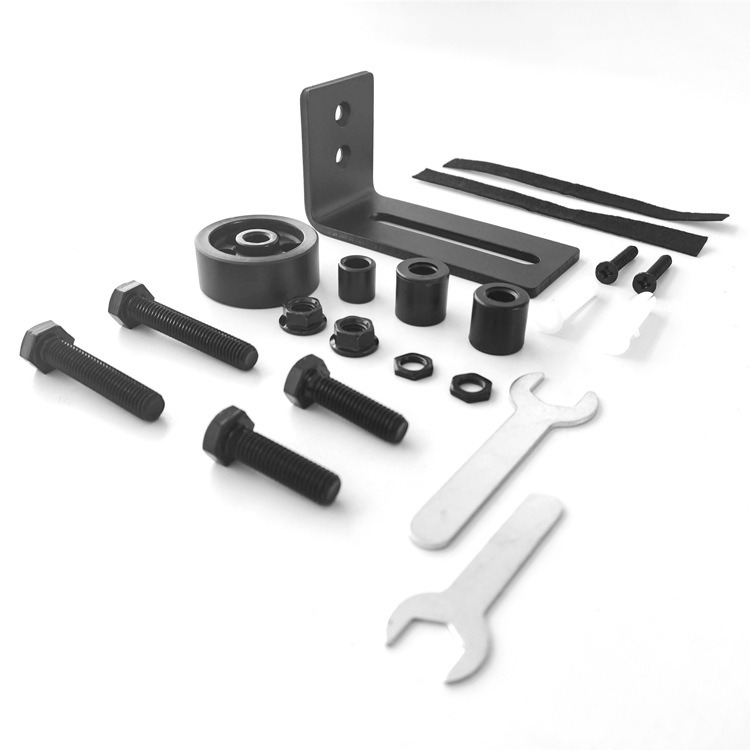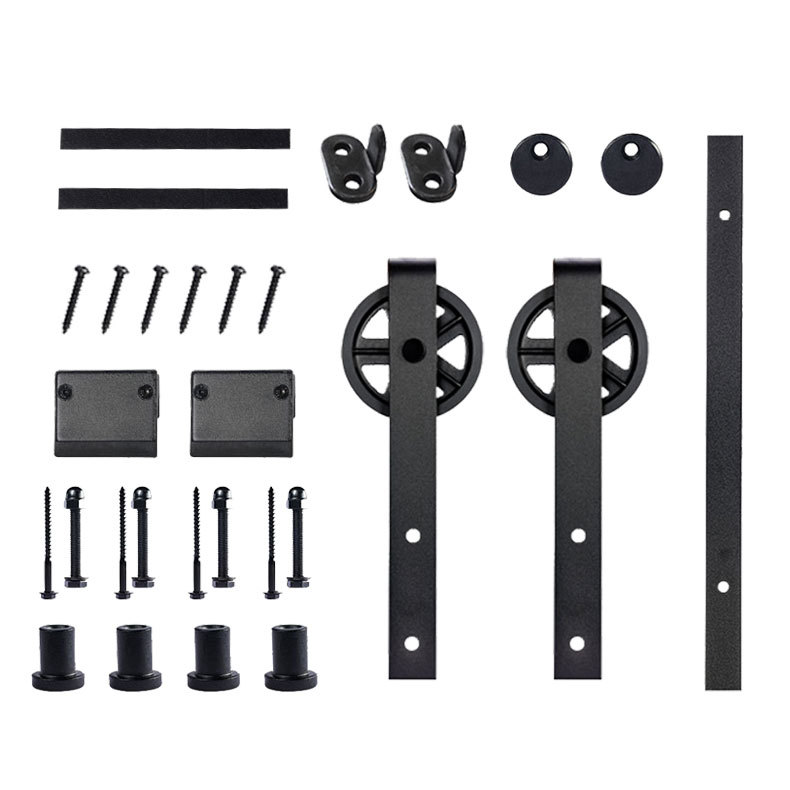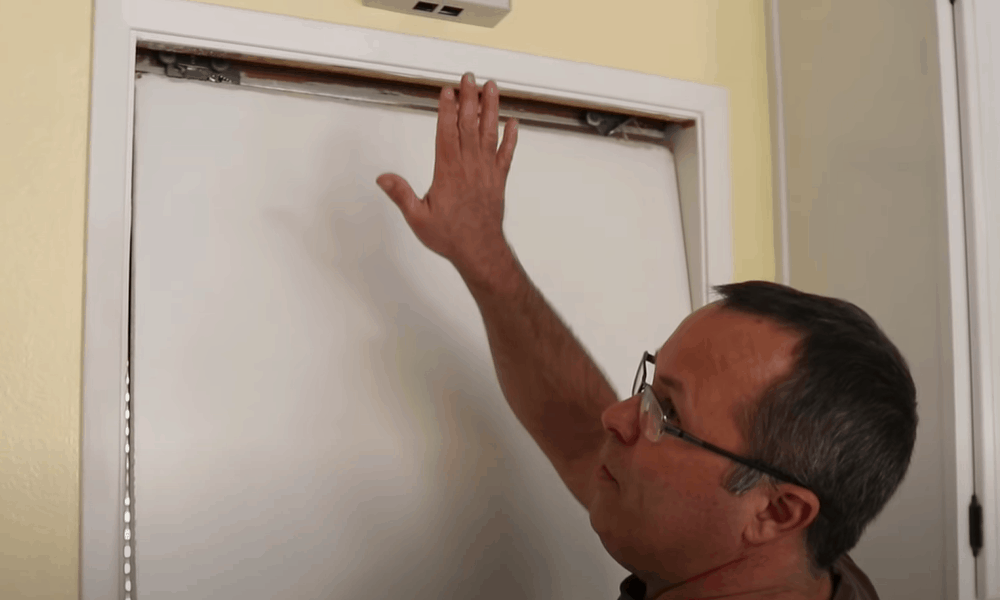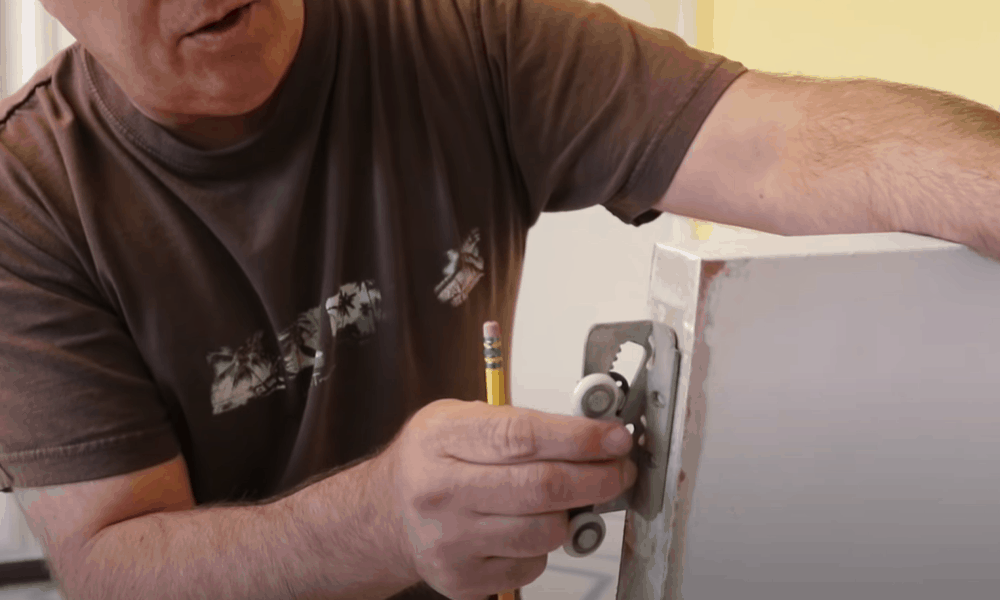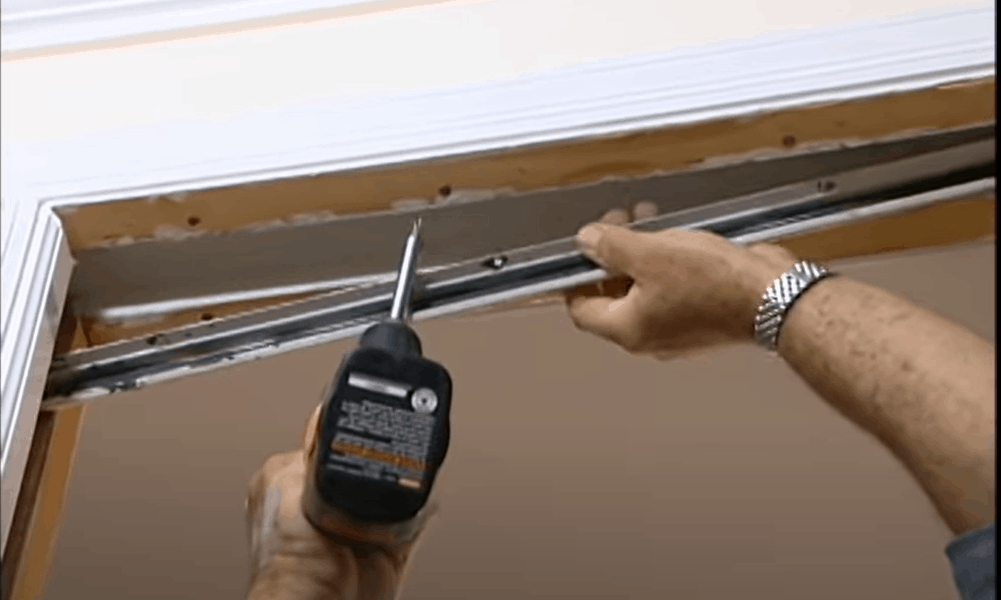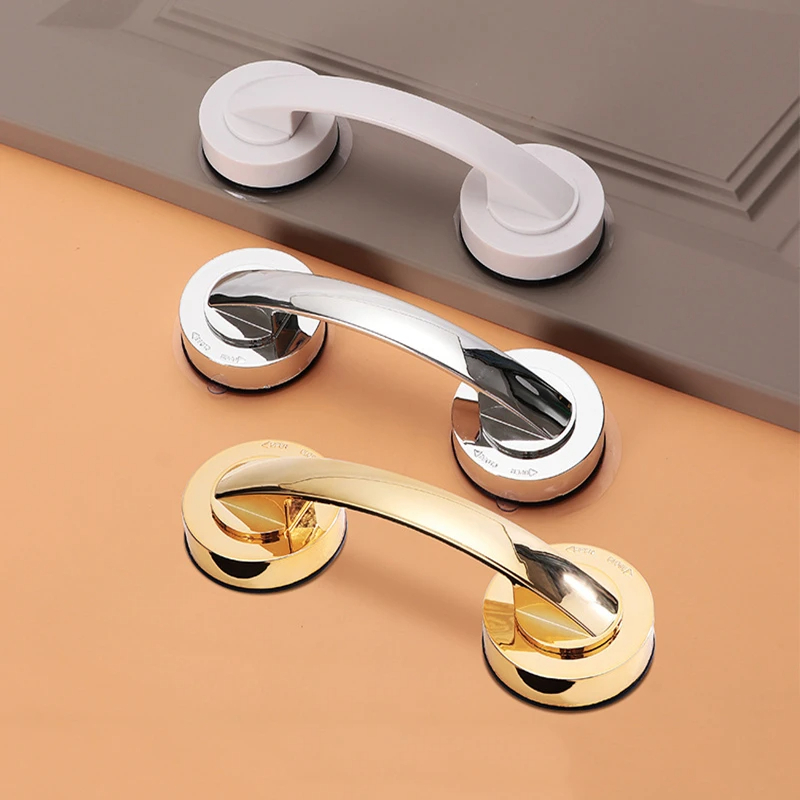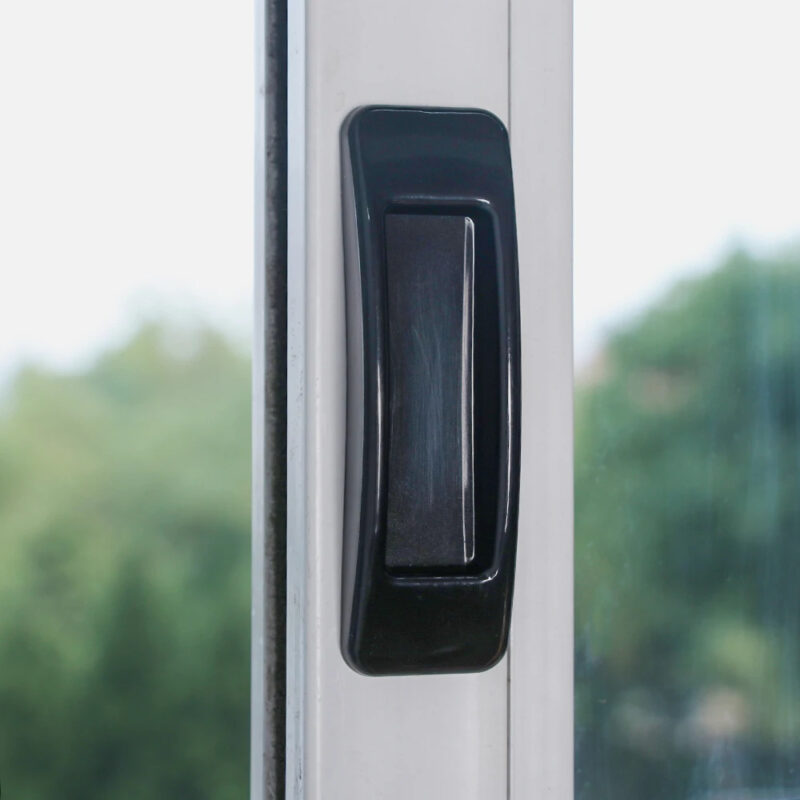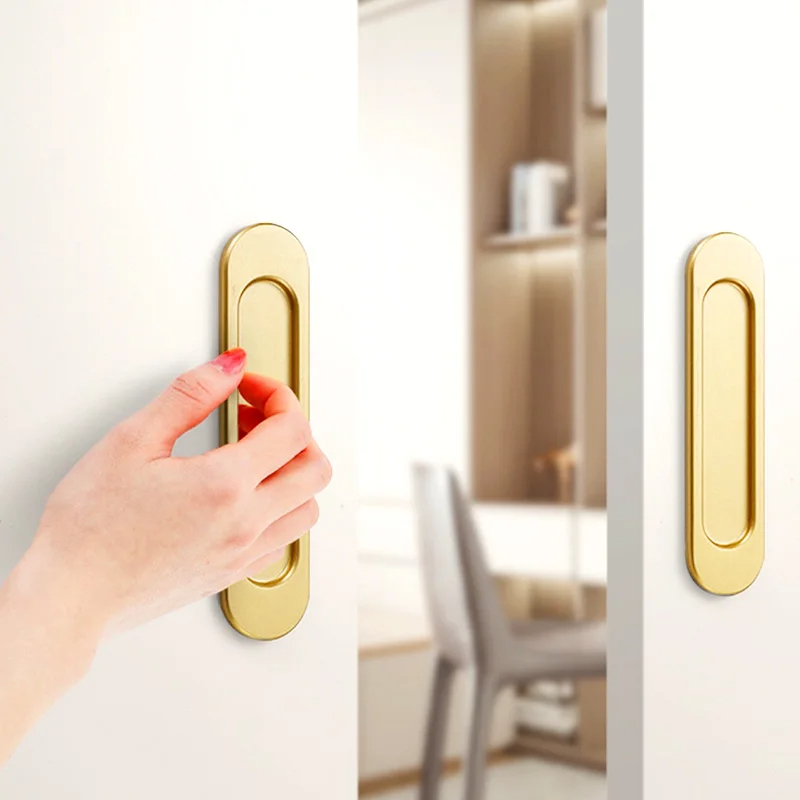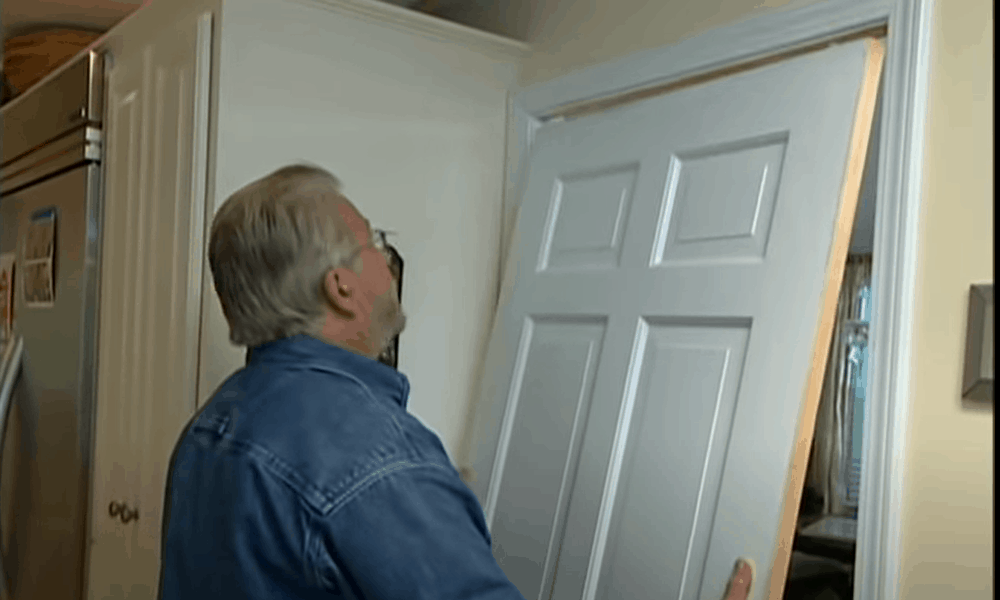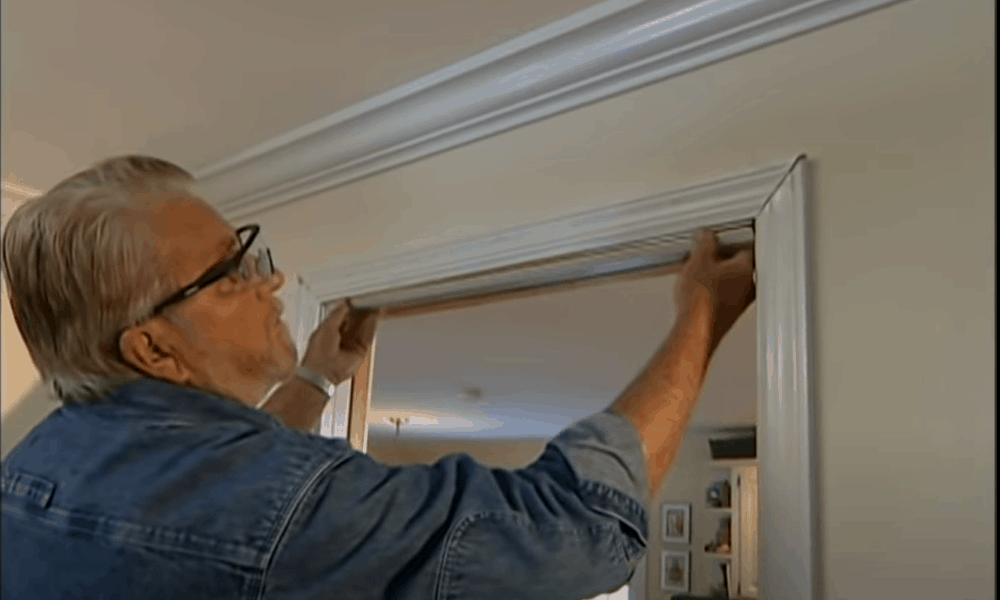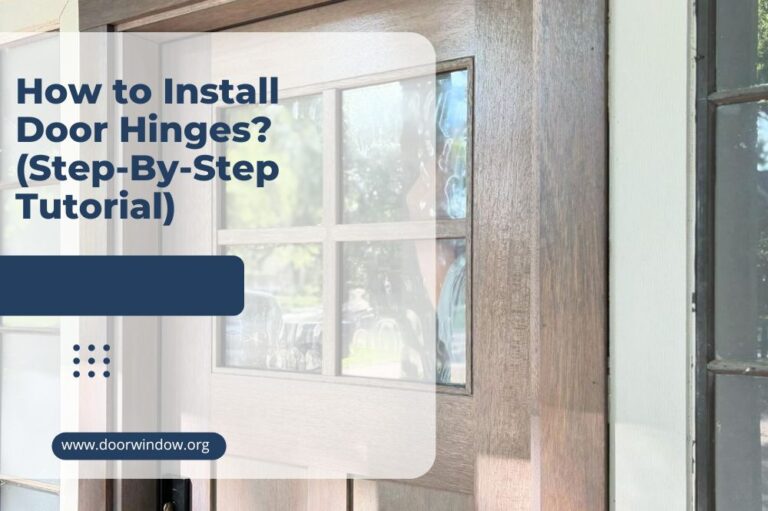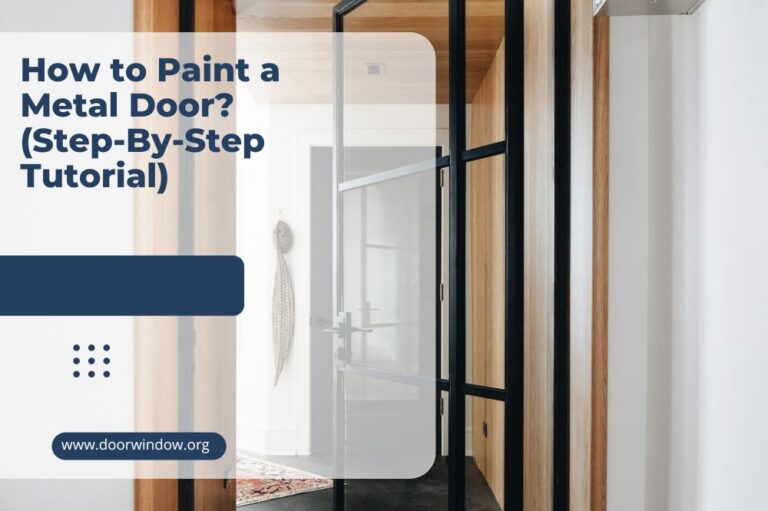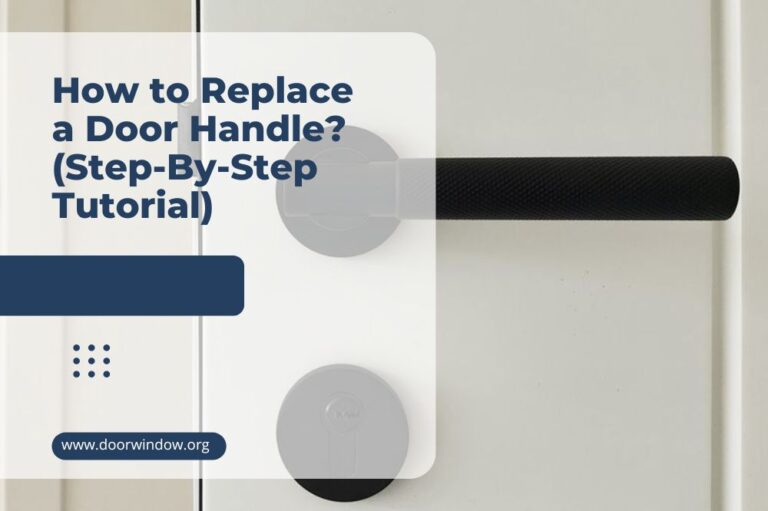How to Fix a Pocket Door? (Step-By-Step Tutorial)
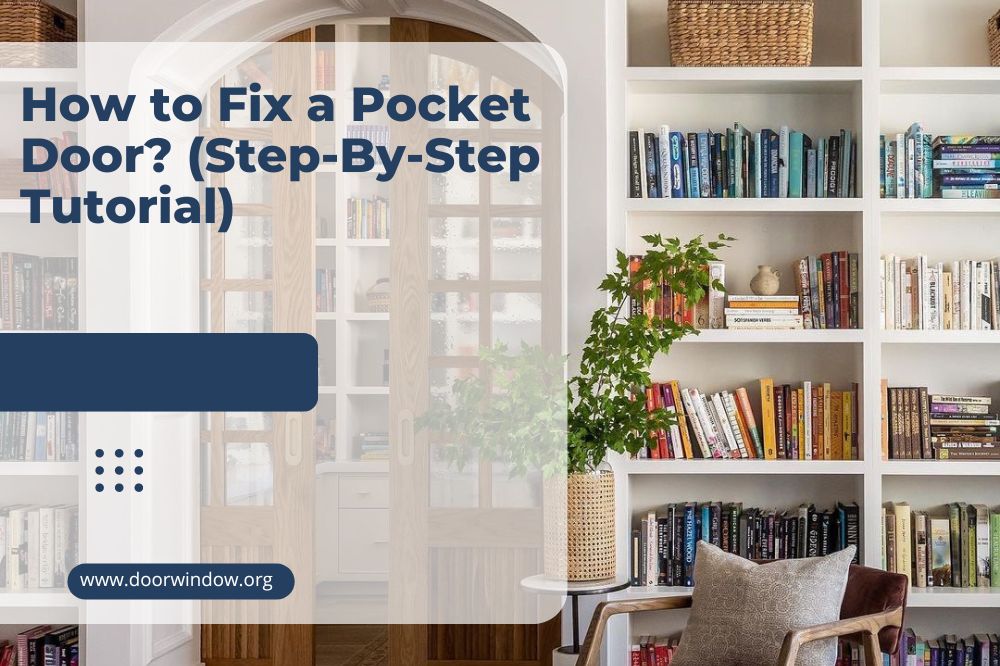
Is your once trusty door no longer opening and closing smoothly? A simple lubrication routine might be all that’s needed to get it back in shape but if there’s a problem with the hardware, you might have to remove the door altogether and replace the broken parts. With the right tools and basic DIY skills, you should be able to fix a pocket door in an afternoon. Read on—we’ll show you how.
Tools for repairing pocket door
You will need the following tools and materials to get the job done:
- Nail gun
- Level
- Putty knife
- Pry bar
- Screwdriver
- Spotlight
- Tape measure
- Drywall saw
- Cordless drill
Materials
- Drywall mud
- J-track
- Pocket door rollers
- Tracks
- 2×6 wooden board
- Shims
Step-by-Step Guide on how to repair a pocket door
When a pocket door won’t work properly, two things could be the problem—the tracks might be damaged or the rollers might be worn out or fallen off the track. Fortunately, you can easily fix these common issues, eliminating the need to purchase a new door system.
Follow these steps to repair a faulty sliding wooden door:
Step 1. Unhinge the door
To diagnose the problem, you first have to remove the door.
- Using a utility knife, cut the caulk seal to release the casing flanking the door at the top. Pry off the casing using a putty knife.
- You do not have to remove the entire casing on all four sides of the door. Removing the top part is enough to expose the door frame and hardware. Be careful not to damage the drywall.
- With the top casing off, use the putty knife to remove the upper part of the door frame. Take care not to break the frame.
Pro tip: If a putty knife doesn’t get the job done, use the tonged end of a hammer to pry off a door frame that has been tightly sealed into place.
Step 2. Lift the door out of its track
How you lift out the door will depend on your door’s sliding mechanism.
- For a door with a roller-skate system, remove the door by prying it up while tapping on the rollers.
- For a j-track system, angle the top of the door away from you to release the rollers from the tracks.
- If the door is trapped inside the pocket, pry the top and bottom edges alternately. Be careful not to damage the surrounding molding as you lift out the door.
Step 3. Check the system for damage
- After taking the door out, place it on its side and inspect the rollers and their respective brackets located on the upper edge of the door slab. Check for broken rollers or twisted axles.
- If the rollers seem to be in good shape, they are probably seized up and need some lubrication. Spray a good quality silicone lubricant on the rollers and brackets to unjam them.
- Use a spotlight to inspect the tracks in the recess of the door frame. With time, tracks can bend and buckle causing the door to be stuck. If this is the case, you will need to replace the old tracks.
Step 4. Replace damaged rollers
- If the rollers are visibly damaged, order a new replacement set from your local home improvement store.
- Unscrew both sets of rollers from the door. Install the new ones. Check that the wheels are in good condition by rolling them with your fingers.
Step 5. Remove faulty tracks
Worn out tracks are a common problem with pocket doors. To install a new track, you will have to cut a hole in the wall.
- Using a spotlight, inspect the pocket where the door was, and take note of how the frame appears. When cutting the hole, you want to steer clear of the studs in the door frame.
- To avoid cutting the studs, use a stud finder to locate the studs hidden behind the wall. Place the stud finder on the wall where you want to cut a hole.
- Slid the stud finder horizontally while holding down the buttons on either side. A light will come on when the finder locates a stud. Draw a mark at this point.
- Continue sliding the finder across the wall to locate other studs. Remember to mark each stud point.
- Use a ruler or leveler to draw out a square or rectangular outline of the area you want to cut. This area should be large enough for the track to wiggle out and back in.
- Use a sharp drywall saw to cut the access hole. Unscrew the track from the door frame and pull it out through the access hole.
Pro tip: Ideally, you should cut the hole closer to the upper door jamb for easy removal of the track.
Step 6. Install a new track
- Once you remove the old track, measure its length, width, and depth. Use these measurements to buy a new track that fits snugly into the track slot in the door frame.
- Before installing the new track, check that the door frame is level. Simply place a level on the track slot and check the position of the bubble. The door frame is level if the bubble is centered. In case the frame is not level, slip in a shim or more until the door frame is completely level.
- Insert the track through the access hole and use a nail gun to fasten it to the overhead track slot in the door frame. Again check that the new track is level.
Step 7. Test the new track
Before hanging the door back in place, check that the new track works properly.
- Attach the two sets of rollers on a 2×6 board to mimic the door. Hang the board onto the track the same way you would a door.
- Slide the board along the track. Check that it moves smoothly inside the pocket, hangs safely on the track, and allows easy access to the adjusting fasteners on the rollers.
- If all looks good, unhung the board and transfer the rollers to the brackets at the top of the door slab. Check out this informative video on the correct way to attach rollers to a pocket door.
Step 8. Install the door
- To reinstall the door, angle the bottom toward you, lift the top toward the door frame, and hang the rollers onto the track.
- Use your foot to push the bottom of the door inward and away from you until the door is in a vertical position and firmly attached to the track.
- Follow the manufacturer’s instructions on locking the rollers in place.
Pro tip: Place a lever underneath the door to help keep the door in a lifted position as you hang the rollers on the tracks.
Step 9. Adjust the door for a perfect fit
- First, slide the door in and out of the pocket to check that it is working properly. If the door leaves an awkward gap at the bottom or along the vertical edge, you will need to do some adjustments.
- The rollers attached to the door have fasteners that secure the wheels in place. Use a small spanner to tighten or loosen these fasteners to adjust the height of the door to your satisfaction.
- Complete the door installation processing by reinstalling the upper door jamb and the trim you had removed earlier.
Step 10. Reinstall the drywall
- With the door put back in place, the next step is to fill in the access hole using the piece of drywall you had cut out earlier.
- Nail in four thin strips of wood around the access hole. Feel free to use shimmers. These will act as backers, giving you something on which to screw the cutout piece of drywall.
- After reinstalling the piece, apply drywall mud (joint compound) all around. Once the compound is dry, sand it to give the wall a seamless look.
There it is! With the track and rollers fixed, your door should now be as good as new!
Extended Tips
Here are additional tips to help you make the most of your pocket doors:
- Lubricate the rollers periodically
Most roller wheels are made of nylon so it is best to use a silicone-based lubricant that will not damage the rollers.
- Adjust rollers accordingly
If the door parts awkwardly the bottom or on the sides, try adjusting the screws on the rollers to bring the door down and to move it further toward the side jambs. Use a small wrench to reach the hidden roller screws.
A quick afternoon project to get your door working as good as new
Pocket doors are an inventive way to save space and add a modern touch to interior spaces. But, like most sliding doors, they are bound to become unwieldy at some point. As our instructions show, tuning up the tracks and rollers usually solves the problem. After fixing the hardware, be sure to lubricate periodically to get the most from your door.
Do you have any questions or comments on fixing pocket doors? Leave them below—we’d love to hear from you.


